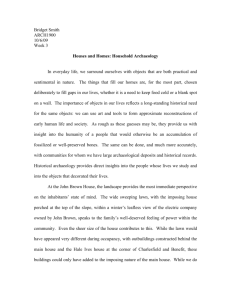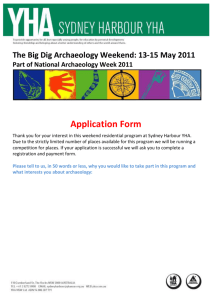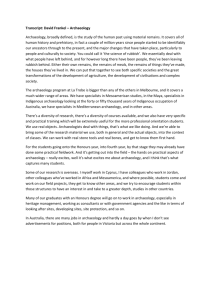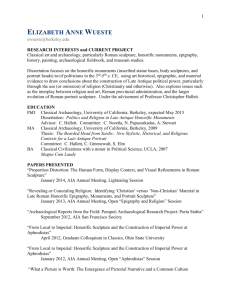A Letter from one of our members to the County Archaeologist
advertisement
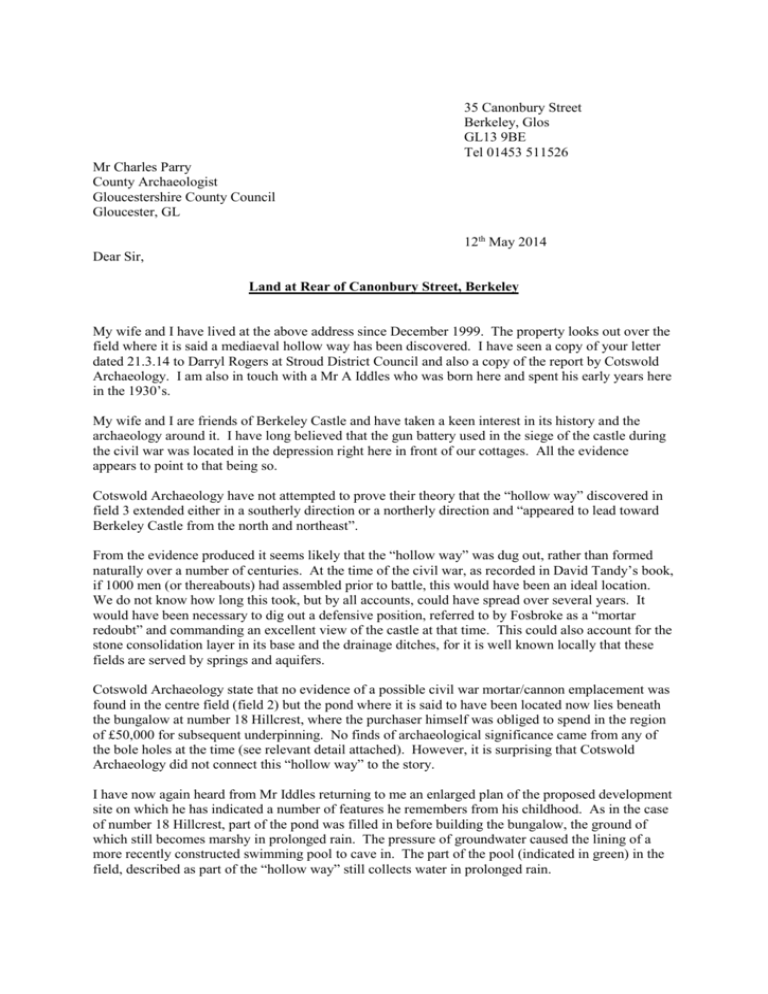
35 Canonbury Street Berkeley, Glos GL13 9BE Tel 01453 511526 Mr Charles Parry County Archaeologist Gloucestershire County Council Gloucester, GL 12th May 2014 Dear Sir, Land at Rear of Canonbury Street, Berkeley My wife and I have lived at the above address since December 1999. The property looks out over the field where it is said a mediaeval hollow way has been discovered. I have seen a copy of your letter dated 21.3.14 to Darryl Rogers at Stroud District Council and also a copy of the report by Cotswold Archaeology. I am also in touch with a Mr A Iddles who was born here and spent his early years here in the 1930’s. My wife and I are friends of Berkeley Castle and have taken a keen interest in its history and the archaeology around it. I have long believed that the gun battery used in the siege of the castle during the civil war was located in the depression right here in front of our cottages. All the evidence appears to point to that being so. Cotswold Archaeology have not attempted to prove their theory that the “hollow way” discovered in field 3 extended either in a southerly direction or a northerly direction and “appeared to lead toward Berkeley Castle from the north and northeast”. From the evidence produced it seems likely that the “hollow way” was dug out, rather than formed naturally over a number of centuries. At the time of the civil war, as recorded in David Tandy’s book, if 1000 men (or thereabouts) had assembled prior to battle, this would have been an ideal location. We do not know how long this took, but by all accounts, could have spread over several years. It would have been necessary to dig out a defensive position, referred to by Fosbroke as a “mortar redoubt” and commanding an excellent view of the castle at that time. This could also account for the stone consolidation layer in its base and the drainage ditches, for it is well known locally that these fields are served by springs and aquifers. Cotswold Archaeology state that no evidence of a possible civil war mortar/cannon emplacement was found in the centre field (field 2) but the pond where it is said to have been located now lies beneath the bungalow at number 18 Hillcrest, where the purchaser himself was obliged to spend in the region of £50,000 for subsequent underpinning. No finds of archaeological significance came from any of the bole holes at the time (see relevant detail attached). However, it is surprising that Cotswold Archaeology did not connect this “hollow way” to the story. I have now again heard from Mr Iddles returning to me an enlarged plan of the proposed development site on which he has indicated a number of features he remembers from his childhood. As in the case of number 18 Hillcrest, part of the pond was filled in before building the bungalow, the ground of which still becomes marshy in prolonged rain. The pressure of groundwater caused the lining of a more recently constructed swimming pool to cave in. The part of the pool (indicated in green) in the field, described as part of the “hollow way” still collects water in prolonged rain. Mr Iddles remembers the “pond” and the “trench” being entirely separate. Figures 3 and 4 accompanying the archaeology report show a substantial widening of the “hollow way” after the easterly branch, but the continuation to the edge of the field is only assumed. Also, there is no evidence that the bank leading down to the road at this point is a manmade construction. I am not an archaeologist but have taken a keen interest in the subject for a number of years, and I am only writing this letter because I believe that there are other possible explanations for the archaeology that need to be considered. Yours faithfully, Brian Butcher Cc Darryl Rogers, Stroud District Council David Tandy, Newport, Berkeley




